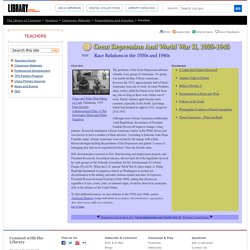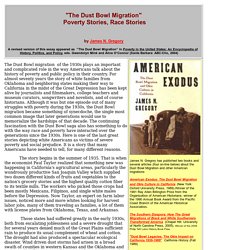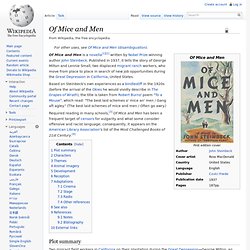

The Great Depression. Of Mice and Men: Plot Overview. Two migrant workers, George and Lennie, have been let off a bus miles away from the California farm where they are due to start work.

George is a small, dark man with “sharp, strong features.” Lennie, his companion, is his opposite, a giant of a man with a “shapeless” face. Overcome with thirst, the two stop in a clearing by a pool and decide to camp for the night. As the two converse, it becomes clear that Lennie has a mild mental disability, and is deeply devoted to George and dependent upon him for protection and guidance. George finds that Lennie, who loves petting soft things but often accidentally kills them, has been carrying and stroking a dead mouse.
The next day, the men report to the nearby ranch. The next day, George confides in Slim that he and Lennie are not cousins, but have been friends since childhood. Of Mice and Men: Context. John Steinbeck was born in 1902 in Salinas, California, a region that became the setting for much of his fiction, including Of Mice and Men.

As a teenager, he spent his summers working as a hired hand on neighboring ranches, where his experiences of rural California and its people impressed him deeply. In 1919, he enrolled at Stanford University, where he studied intermittently for the next six years before finally leaving without having earned a degree. For the next five years, he worked as a reporter and then as caretaker for a Lake Tahoe estate while he completed his first novel, an adventure story called Cup of Gold, which was published in 1929.
Critical and commercial success did not come for another six years, when Tortilla Flat was published in 1935, at which point Steinbeck was finally able to support himself entirely with his writing. In his acceptance speech for the 1962 Nobel Prize in literature, Steinbeck said: Critical opinions of Steinbeck’s work have always been mixed. Race During the Great Depression - American Memory Timeline- Classroom Presentation. The problems of the Great Depression affected virtually every group of Americans.

No group was harder hit than African Americans, however. By 1932, approximately half of black Americans were out of work. In some Northern cities, whites called for blacks to be fired from any jobs as long as there were whites out of work. Racial violence again became more common, especially in the South. Lynchings, which had declined to eight in 1932, surged to 28 in 1933. Although most African Americans traditionally voted Republican, the election of President Franklin Roosevelt began to change voting patterns.
GCSE Bitesize - Of Mice and Men. Of Mice and Men: Steinbeck's Of Mice and Men. John Steinbeck's Of Mice and Men is a parable about what it means to be human.

Steinbeck's story of George and Lennie's ambition of owning their own ranch, and the obstacles that stand in the way of that ambition, reveal the nature of dreams, dignity, loneliness, and sacrifice. Ultimately, Lennie, the mentally handicapped giant who makes George's dream of owning his own ranch worthwhile, ironically becomes the greatest obstacle to achieving that dream. Written by: John Steinbeck Type of Work: novel Genres: parable; Great Depression First Published: 1937 Setting: a ranch Main Characters: George Milton; Lennie Small; Candy; Curley; Curley's wife; Slim; Crooks Major Thematic Topics: nature of dreams; barriers; powerlessness; fate; Christian influences; classical influences; natural influences; loss of paradise; my brother's keeper; ephemeral nature of life.
The Dust Bowl Migration: Poverty Stories, Race Stories. The Dust Bowl migration of the 1930s plays an important and complicated role in the way Americans talk about the history of poverty and public policy in their country.

For almost seventy years the story of white families from Oklahoma and neighboring states making their way to California in the midst of the Great Depression has been kept alive by journalists and filmmakers, college teachers and museum curators, songwriters and novelists, and of course historians. Although it was but one episode out of many struggles with poverty during the 1930s, the Dust Bowl migration became something of synecdoche, the single most common image that later generations would use to memorialize the hardships of that decade.
The continuing fascination with the Dust Bowl saga also has something to do with the way race and poverty have interacted over the generations since the 1930s. Here is one of the last great stories depicting white Americans as victims of severe poverty and social prejudice. Of Mice and Men. Of Mice and Men is a novella[1][2] written by Nobel Prize-winning author John Steinbeck.

Published in 1937, it tells the story of George Milton and Lennie Small, two displaced migrant ranch workers, who move from place to place in search of new job opportunities during the Great Depression in California, United States. Based on Steinbeck's own experiences as a bindlestiff in the 1920s (before the arrival of the Okies he would vividly describe in The Grapes of Wrath), the title is taken from Robert Burns' poem "To a Mouse", which read: "The best laid schemes o' mice an' men / Gang aft agley. " (The best laid schemes of mice and men / Often go awry.) Required reading in many schools,[3] Of Mice and Men has been a frequent target of censors for vulgarity and what some consider offensive and racist language; consequently, it appears on the American Library Association's list of the Most Challenged Books of 21st Century.[4] Plot summary Lennie accidentally kills his puppy while stroking it.